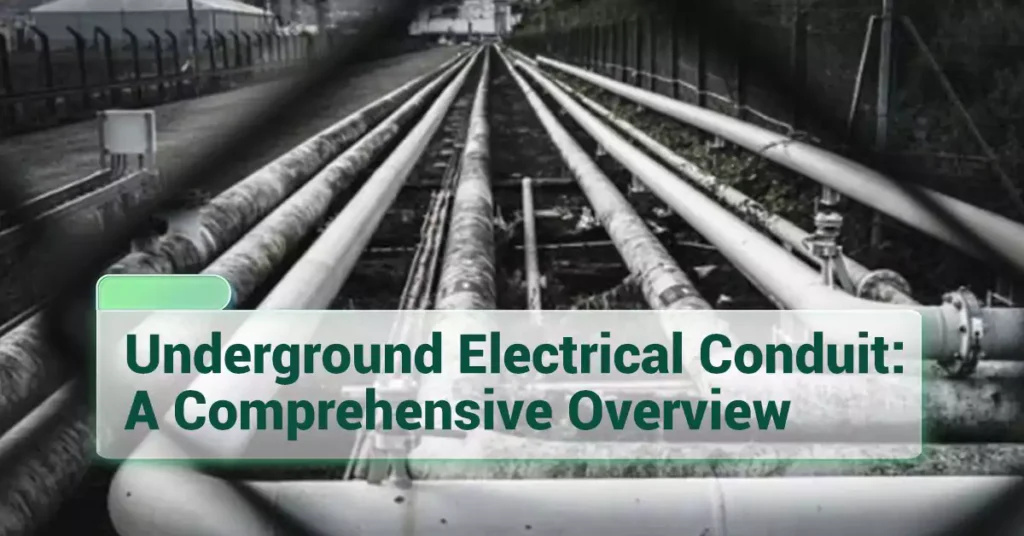
Tabla de contenido
Conducto eléctrico subterráneo Es un componente vital de los sistemas eléctricos modernos, que proporciona un medio seguro y eficiente para enrutar y proteger el cableado eléctrico debajo de la superficie del suelo. Sirve como conducto, tanto literal como figurativamente, para la transmisión sin problemas de energía y datos en diversas aplicaciones. En este artículo, profundizamos en la exploración integral de los conductos eléctricos subterráneos, arrojando luz sobre su definición, propósito y significado.
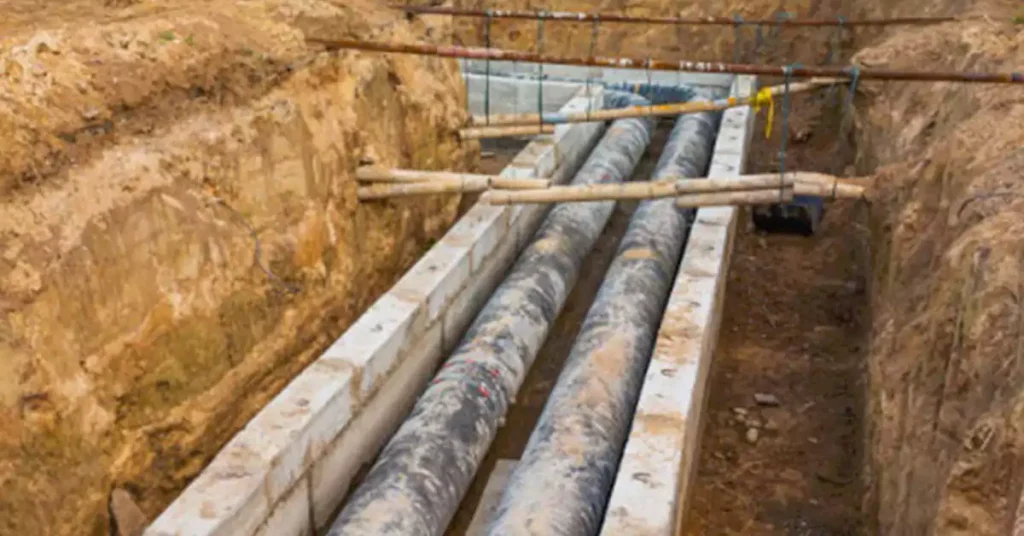
Un conducto eléctrico subterráneo se refiere a un sistema de tuberías, tubos o canales diseñados específicamente para alojar y proteger el cableado eléctrico y los cables debajo del suelo. Actúa como un conducto protector para proteger el cableado de daños físicos, humedad y factores ambientales.
El propósito principal de los conductos eléctricos subterráneos es doble. En primer lugar, garantiza la seguridad de las instalaciones eléctricas al evitar el contacto accidental con cables con corriente y reducir el riesgo de peligros eléctricos. Al encerrar de forma segura el cableado, los conductos minimizan las posibilidades de descargas eléctricas, cortocircuitos e incendios, lo que los convierte en una medida de seguridad esencial.
En segundo lugar, los conductos subterráneos facilitan el tendido eficiente y organizado de los cables eléctricos, lo que permite la transmisión fluida de energía y datos. Permiten ocultar y consolidar varios cables, lo que simplifica los procesos de mantenimiento y resolución de problemas. Además, los sistemas de conductos brindan flexibilidad para futuras modificaciones o actualizaciones del sistema eléctrico, lo que garantiza la adaptabilidad y la escalabilidad.
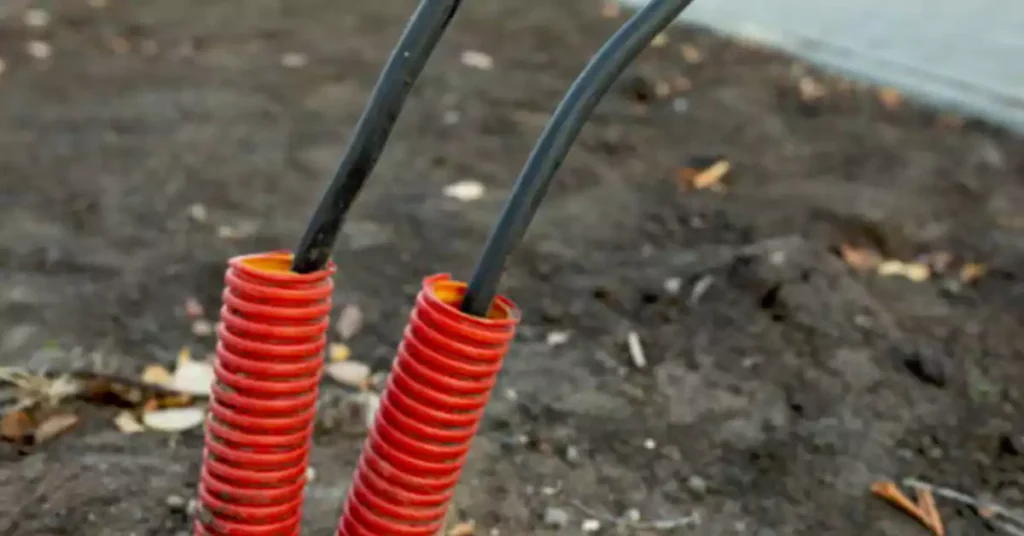
No se puede exagerar la importancia de los conductos eléctricos subterráneos, en particular en los proyectos de infraestructura y construcción modernos. A continuación, se indican algunas razones clave que resaltan su importancia:
Protección del cableado eléctrico: Los conductos subterráneos protegen el cableado eléctrico de daños físicos provocados por fuerzas externas, como actividades de construcción, tráfico de vehículos o elementos naturales. Actúan como una barrera resistente que protege los cables de impactos, abrasión y otros peligros potenciales.
Prevención de daños por humedad y ambientales: Los conductos subterráneos ofrecen una excelente resistencia a la humedad, a las sustancias corrosivas y a otros factores ambientales. Evitan la infiltración de agua, que puede provocar averías eléctricas y el deterioro de los cables, garantizando la fiabilidad y la longevidad del sistema eléctrico.
Mayor seguridad para el personal y el equipo: Al aislar el cableado eléctrico dentro de los conductos, se reduce significativamente el riesgo de contacto accidental, lo que protege tanto a las personas como a los equipos. Los sistemas de conductos están diseñados para cumplir con estrictas normas de seguridad, lo que proporciona una capa adicional de protección contra los peligros eléctricos.
Versatilidad en diversas aplicaciones subterráneas: Los conductos eléctricos subterráneos se utilizan ampliamente en diversas aplicaciones, incluidos proyectos residenciales, comerciales, industriales y municipales. Se pueden instalar en redes de servicios públicos subterráneas, cimientos de edificios, estacionamientos, carreteras y otros desarrollos de infraestructura, y satisfacen una amplia gama de necesidades eléctricas.
Cumplimiento de códigos y normativas eléctricas: Las instalaciones de conductos subterráneos deben cumplir con códigos y normas eléctricas específicos, como los que se describen en el Código Eléctrico Nacional (NEC). El cumplimiento garantiza que el sistema eléctrico cumpla con los estándares de seguridad requeridos y mitiga las posibles responsabilidades.
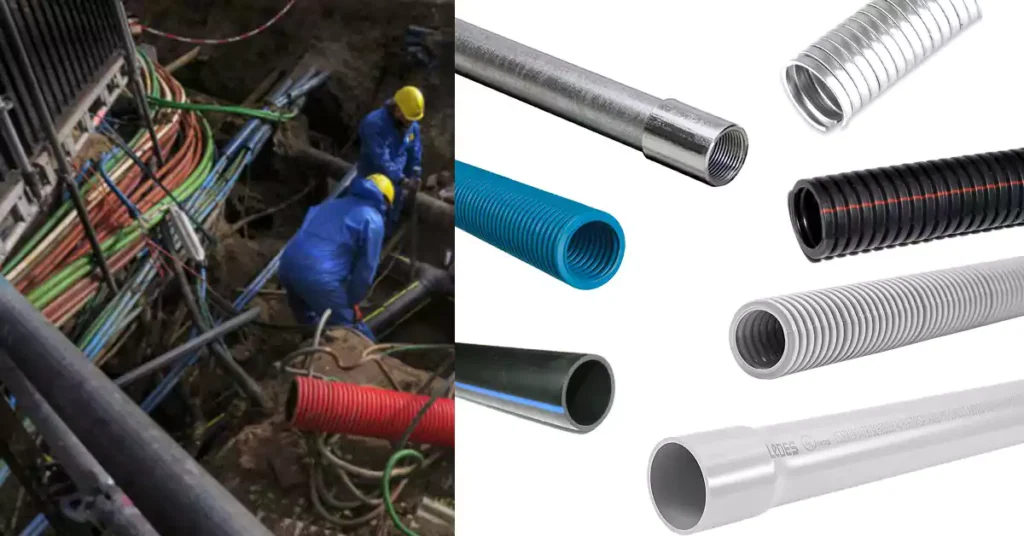
Existe una amplia gama de opciones de conductos para instalaciones eléctricas subterráneas, cada una con sus propias características y adecuación para diferentes aplicaciones. Comprender los distintos tipos de conductos eléctricos subterráneos es fundamental para seleccionar la opción más adecuada en función de factores como la durabilidad, la flexibilidad, la rentabilidad y la compatibilidad con sistemas de cableado específicos. A continuación, se muestran algunos tipos comunes de conductos eléctricos subterráneos:
El conducto metálico rígido (RMC), también conocido como conducto de acero galvanizado, es una de las opciones más robustas para instalaciones subterráneas. Está hecho de acero y tiene una pared gruesa, lo que proporciona una excelente protección contra daños físicos e impactos. El RMC es altamente resistente al fuego, la luz solar y la corrosión, lo que lo hace adecuado para entornos hostiles y áreas propensas a estrés mecánico. Sin embargo, debido a su rigidez, el RMC requiere una planificación cuidadosa y un doblado preciso al pasar por esquinas o curvas.
Los tubos metálicos eléctricos (EMT) son una opción de conducto liviano, generalmente de acero galvanizado o aluminio. Ofrecen una buena protección para el cableado eléctrico y son más flexibles que los RMC. Los EMT son fáciles de instalar y se pueden doblar para pasar por esquinas y curvas sin necesidad de herramientas o equipos especializados. Se utilizan comúnmente en aplicaciones residenciales y comerciales donde la flexibilidad y la facilidad de instalación son esenciales.
Los conductos de fibra de vidrio, también conocidos como conductos de plástico reforzado (RTRC), son una opción no metálica que ofrece una excelente resistencia a la corrosión, la humedad y la exposición a sustancias químicas. Son livianos, lo que los hace más fáciles de manipular e instalar en comparación con los conductos de metal. Los conductos de fibra de vidrio son una opción ideal para instalaciones subterráneas en entornos corrosivos, como plantas de tratamiento de aguas residuales o instalaciones de procesamiento químico. Además, no son conductores, lo que ofrece beneficios de seguridad adicionales en ciertas aplicaciones.
Los conductos de polietileno de alta densidad (HDPE) son una opción duradera y flexible para instalaciones eléctricas subterráneas. Están hechos de polietileno de alta densidad, un material termoplástico conocido por su resistencia a los impactos, los productos químicos y los factores ambientales. Los conductos de HDPE son livianos y se pueden doblar o enrollar fácilmente, lo que permite una instalación eficiente en diversos entornos. Se utilizan comúnmente en aplicaciones de telecomunicaciones, fibra óptica y distribución de energía.
Los conductos de cloruro de polivinilo (PVC) son una opción popular tanto para instalaciones eléctricas subterráneas como sobre el suelo. Son rentables, livianos y ofrecen buena resistencia a la humedad, los productos químicos y la corrosión. Conducto de PVC Está disponible en varios tamaños y se puede cortar, unir e instalar fácilmente con accesorios específicos para PVC. Se utiliza comúnmente en aplicaciones residenciales, comerciales e industriales donde la rentabilidad y la facilidad de instalación son consideraciones importantes.
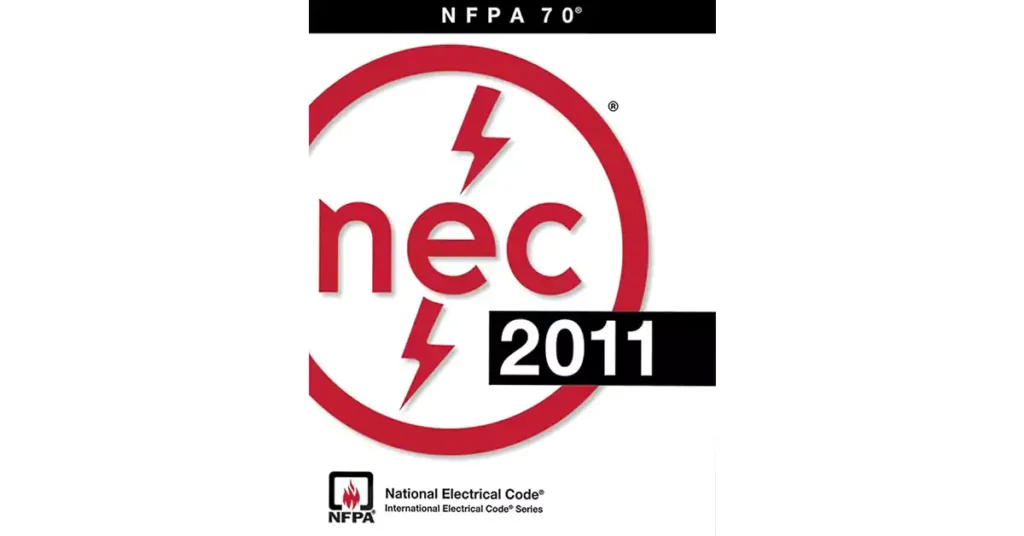
Cuando se trata de instalaciones de conductos eléctricos subterráneos, el cumplimiento de códigos y requisitos específicos es fundamental para garantizar la seguridad, la confiabilidad y el cumplimiento de las normas de la industria. Existen varios códigos y requisitos que rigen los sistemas de conductos eléctricos subterráneos:
La certificación UL2420 BG, emitida por Underwriters Laboratories (UL), es una norma ampliamente reconocida para la seguridad y el rendimiento de los sistemas de conductos subterráneos no metálicos. Esta certificación garantiza que el conducto cumple con criterios de prueba rigurosos, que incluyen resistencia al impacto, exposición a rayos UV y estrés ambiental. El conducto certificado UL2420 BG brinda la garantía de que puede soportar las demandas de las instalaciones subterráneas, ofreciendo mayor durabilidad y protección para el cableado eléctrico.
La clasificación de resistencia al fuego UL94HB es un factor crítico a tener en cuenta al seleccionar conductos eléctricos subterráneos. Mide la resistencia de un material a la ignición y la propagación de la llama. Los materiales para conductos con una clasificación de resistencia al fuego más alta brindan una mejor resistencia al fuego, lo que reduce el riesgo de propagación del fuego en caso de falla o sobrecarga eléctrica. Es esencial elegir materiales para conductos con clasificaciones de resistencia al fuego adecuadas para cumplir con las normas de seguridad contra incendios y minimizar los posibles peligros.
El Código Eléctrico Nacional (NEC) es un conjunto de normas y reglamentos establecidos por la Asociación Nacional de Protección contra Incendios (NFPA) para garantizar la seguridad eléctrica en los Estados Unidos. El NEC proporciona pautas para la instalación, el mantenimiento y el uso de sistemas eléctricos, incluidas las instalaciones de conductos subterráneos. Abarca varios aspectos, como el tamaño de los conductos, la conexión a tierra, la unión, la profundidad de enterramiento y los métodos de cableado. El cumplimiento de los requisitos del NEC es fundamental para cumplir con los estándares de seguridad y las obligaciones legales.
Algunos requisitos clave del NEC relacionados con las instalaciones de conductos eléctricos subterráneos son:
Dimensionamiento de conductos: El NEC especifica el tamaño mínimo de los conductos en función de la cantidad y el tamaño de los conductores. Esto garantiza un espacio adecuado para el tendido de cables, la disipación del calor y las futuras actualizaciones.
Profundidad de enterramiento: El NEC proporciona pautas sobre la profundidad mínima de enterramiento de los conductos subterráneos para protegerlos de daños y garantizar el cumplimiento de las normas locales. Factores como el tipo de suelo, la ubicación y las condiciones ambientales pueden influir en los requisitos específicos de profundidad de enterramiento.
Conexión a tierra y unión: La conexión a tierra y la unión de los sistemas de conductos son fundamentales para la seguridad eléctrica. El NEC describe requisitos específicos para la conexión a tierra de conductores, puentes de unión y equipos.
Métodos de cableado: El NEC proporciona pautas para la selección e instalación de métodos de cableado dentro de sistemas de conductos, garantizando un aislamiento, protección y separación adecuados de los diferentes tipos de conductores.
Además del NEC, pueden aplicarse otros códigos y normas según la aplicación, la ubicación y la jurisdicción específicas. Estos pueden incluir códigos de construcción locales, regulaciones estatales y normas específicas de la industria. Es esencial consultar con las autoridades locales y los profesionales de la electricidad para garantizar el cumplimiento de todos los códigos y normas pertinentes.
La profundidad de enterramiento adecuada es crucial para las instalaciones de conductos eléctricos subterráneos, ya que garantiza la protección y la longevidad del sistema de conductos y, al mismo tiempo, cumple con las normas de seguridad. En esta sección, exploraremos los factores que influyen en la profundidad de enterramiento, las pautas de profundidad de enterramiento mínima según el Código Eléctrico Nacional (NEC) y los ajustes para condiciones específicas.
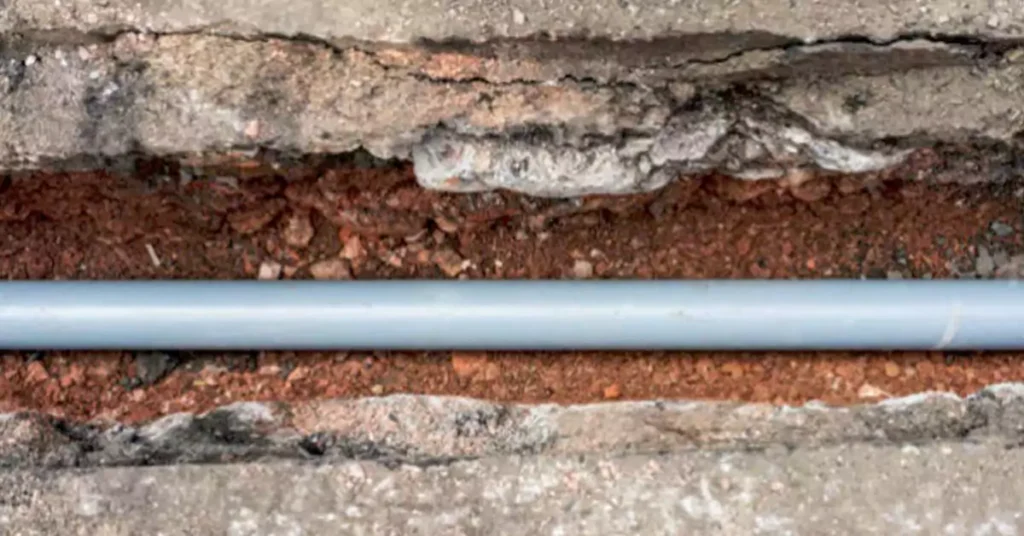
Hay varios factores que influyen en la profundidad adecuada de enterramiento de los conductos eléctricos subterráneos. Entre estos factores se incluyen los siguientes:
El tipo de suelo, el contenido de humedad y las sustancias corrosivas presentes en el suelo pueden afectar la integridad de los conductos. Los suelos con un alto contenido de humedad o propiedades corrosivas pueden requerir una mayor profundidad de enterramiento para una mayor protección.
Si el conducto está ubicado en un área con tráfico de vehículos o equipos pesados, se debe aumentar la profundidad de enterramiento para soportar el posible estrés mecánico y evitar daños.
La profundidad de la cubierta se refiere a la distancia entre la parte superior del conducto y la superficie del suelo. Debe brindar protección suficiente contra el contacto accidental, las actividades de excavación y los posibles daños causados por trabajos de jardinería o construcción.
El tipo de cableado que se instala dentro del conducto puede afectar los requisitos de profundidad de enterramiento. Los diferentes tipos de cableado tienen distintos grados de aislamiento y resistencia a la humedad. Por ejemplo, el cableado de bajo voltaje, como los cables de telecomunicaciones o de datos, puede tener requisitos de profundidad de enterramiento específicos para garantizar la transmisión adecuada de la señal y la protección contra interferencias. Es importante consultar las especificaciones del fabricante y los códigos pertinentes para determinar la profundidad de enterramiento adecuada para tipos de cableado específicos.
Los distintos tipos de conductos, como los de PVC y los de metal, pueden tener distintos requisitos de profundidad de enterramiento. Normalmente, los conductos de PVC deben enterrarse al menos a 18 pulgadas de profundidad, mientras que los conductos eléctricos de metal galvanizado deben enterrarse al menos a 6 pulgadas de profundidad.
El artículo 300 del NEC establece los requisitos generales para las instalaciones subterráneas. Y la tabla 300.5 enumera claramente la profundidad de enterramiento mínima requerida para diferentes situaciones de instalación. A continuación, se presentan los requisitos para las instalaciones generales.
Tabla 300.5(A) Requisitos mínimos de cobertura, 0 a 1000 voltios de CA, 1500 voltios de CC, nominal, enterramiento en milímetros (pulgadas) | ||||||||||
Ubicación del método de cableado o circuito | Tipo de método de cableado o circuito | |||||||||
Columna 1 Cables o conductores de enterramiento directo | Columna 2 Conducto metálico rígido o conducto metálico intermedio | Columna 3 Tubos eléctricos metálicos, no metálicos Canalizaciones homologadas para enterramiento directo sin revestimiento de hormigón u otras canalizaciones homologadas | Columna 4 Residencial Circuitos derivados de 120 voltios o menos con protección GFCI y protección máxima contra sobrecorriente de 20 amperios | Columna 5 Circuitos para Control de riego e iluminación del paisaje limitado a no más de 30 voltios e instalado con tipo UF o en otro cable o canalización identificado | ||||||
mm | en. | mm | en. | mm | en. | mm | en. | mm | en. | |
Todas las ubicaciones no especificadas a continuación | 600 | 24 | 150 | 6 | 450 | 18 | 300 | 12 | 1501,2 | 61,2 |
Además de las ubicaciones mencionadas anteriormente, todavía hay ubicaciones como:
- En zanja de hormigón de menos de 50 mm (2 pulg.) de espesor o equivalente;
- Debajo de un edificio;
- Bajo una losa exterior de concreto de un mínimo de 102 mm (4 pulg.) de espesor sin tráfico vehicular y cuya losa se extienda no menos de 152 mm (6 pulg.) más allá de la instalación subterránea;
- Debajo de calles, autopistas, caminos, callejones, entradas y estacionamientos;
- Caminos de acceso y zonas de estacionamiento al aire libre para viviendas unifamiliares y bifamiliares, utilizados únicamente para fines relacionados con la vivienda;
- En o debajo de las pistas de los aeropuertos, incluidas las áreas adyacentes donde está prohibido el paso.
Cada ubicación de instalación específica y tipo de método de cableado tienen diferentes requisitos de profundidad de enterramiento, que varían de 4 a 24 pulgadas de profundidad; se puede encontrar información en NEC.
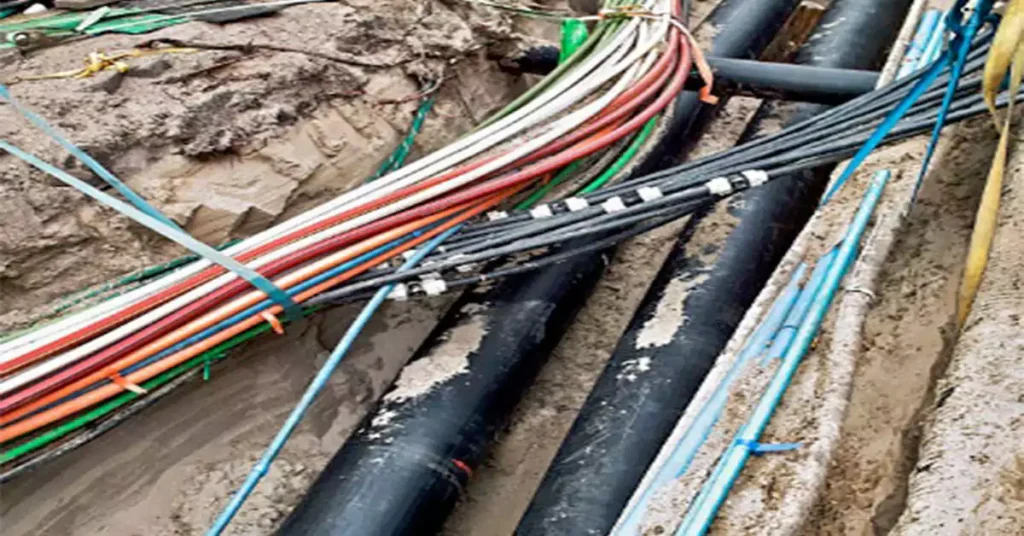
Es posible que determinadas condiciones específicas, como las líneas de congelación y las normativas locales, requieran ajustes en los requisitos de profundidad de enterramiento. A continuación, se indican algunos ajustes habituales:
Líneas de escarcha: En las regiones con temperaturas gélidas, los requisitos de profundidad de enterramiento deben tener en cuenta la línea de congelación. El conducto debe instalarse por debajo de la línea de congelación para evitar que el suelo congelado lo dañe o provoque movimientos o levantamientos del terreno.
Regulaciones locales: El NEC (Código Eléctrico Nacional) se usa y se sigue ampliamente en la región de Estados Unidos, pero los distintos países y regiones pueden tener diferentes códigos y regulaciones a seguir. Los códigos y regulaciones de construcción locales pueden dictar requisitos específicos de profundidad de enterramiento según factores regionales, estándares de construcción o consideraciones de seguridad. Es fundamental consultar con las autoridades locales y cumplir con estas regulaciones.
Es esencial tener en cuenta estos factores al determinar los requisitos de profundidad de enterramiento para instalaciones de conductos eléctricos subterráneos para garantizar la protección, la longevidad y el cumplimiento del sistema de conductos.
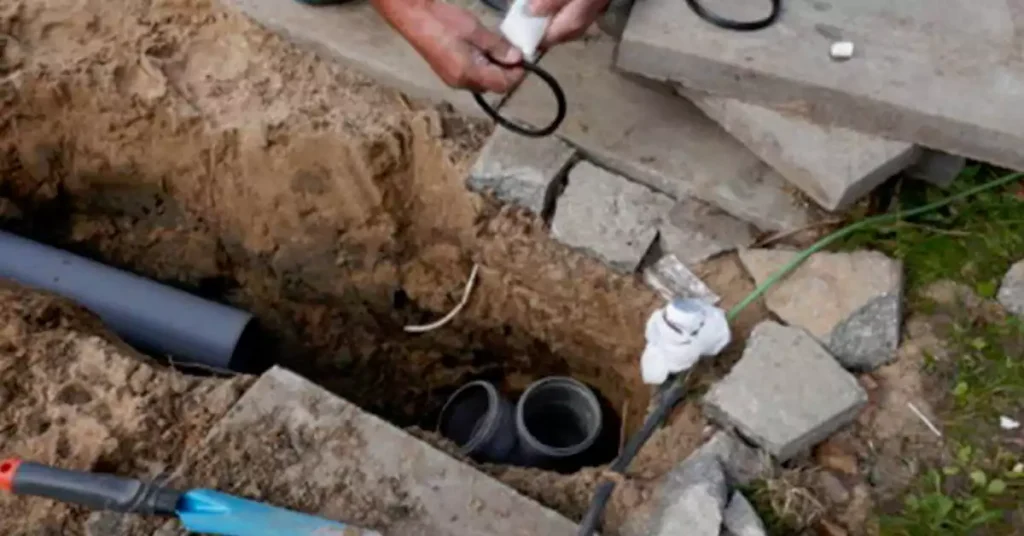
La instalación adecuada de conductos eléctricos subterráneos es fundamental para garantizar un tendido seguro y eficaz de los cables. En esta sección, le guiaremos paso a paso a través del proceso de instalación de conductos eléctricos subterráneos, preparación del sitio, colocación de conductos, tendido de cables, colocación de cables, sellado de juntas de conductos e implementación de técnicas de conexión a tierra y unión.
- Preparación del sitio y excavación: Prepare el sitio y excave una zanja a la profundidad requerida para la instalación del conducto.
- Colocación y soporte de conductos: Coloque el conducto en la zanja y utilice correas para asegurarlo en su lugar.
- Colocación de cables subterráneos dentro de conductos: Pase los cables eléctricos a través del conducto siguiendo la ruta designada.
- Cómo tirar y asegurar cables: Utilice herramientas adecuadas para pasar los cables a través del conducto y fijarlos en su lugar.
- Sellado e impermeabilización de juntas de conductos: Sella las uniones del conducto para evitar la infiltración de agua y proteger los cables.
- Técnicas adecuadas de conexión a tierra y unión: Asegúrese de que la conexión a tierra y la unión del sistema eléctrico sean adecuadas para garantizar la seguridad y el funcionamiento.
Después de confirmar el sitio de instalación del cableado, realice los siguientes 5 pasos:
- Identifique la ruta deseada para el conducto y márquela en consecuencia.
- Comuníquese con las empresas de servicios públicos locales para localizar cualquier servicio público subterráneo existente en el área para evitar daños accidentales.
- Obtenga los permisos necesarios y cumpla con las regulaciones locales para la excavación y la construcción.
- Excave una zanja a lo largo del camino marcado con el ancho y la profundidad adecuados, teniendo en cuenta los requisitos de profundidad de enterramiento discutidos anteriormente.
- Asegúrese de que el fondo de la zanja esté liso y libre de rocas u objetos afilados que puedan dañar el conducto.
Una vez que el sitio y la zanja estén listos, proceda a instalar el conducto en los siguientes 3 pasos:
- Seleccione el tipo y tamaño de conducto adecuados según los requisitos de cableado y las pautas de profundidad de enterramiento.
- Coloque el conducto en la zanja, asegurándose de que siga el camino deseado.
- Proporcione el soporte adecuado para el conducto utilizando correas, abrazaderas o colgadores de conductos a intervalos regulares para evitar que se combe o se mueva.
Una vez que el conducto esté listo, siga estos tres pasos para pasar los cables:
- Prepare los cables quitando cualquier revestimiento exterior o aislamiento según sea necesario.
- Introduzca los cables en el conducto asegurándose de que estén correctamente alineados y no torcidos ni tensos.
- Si es necesario, utilice lubricante para cables para facilitar el tendido suave del cable.
Haga las siguientes 3 cosas para garantizar una colocación segura de los cables:
- Utilice técnicas adecuadas para tirar de cables, como usar pinzas para tirar de cables o cinta pasacables, para tirar de los cables de manera suave y segura a través del conducto.
- Evite exceder la tensión de tracción recomendada para evitar dañar el cable.
- Una vez que haya pasado los cables, fíjelos en ambos extremos para evitar que se muevan o se tensen.
Aplique los siguientes 3 pasos para garantizar la seguridad e integridad de la conexión del conducto:
- Instale accesorios y conectores adecuados en las uniones de los conductos para garantizar una conexión segura y hermética.
- Aplique sellador de conductos o compuesto impermeabilizante a las juntas para proteger contra la infiltración de humedad.
- Utilice tubos termorretráctiles o cinta aisladora para sellar y aislar aún más las conexiones, si es necesario.
Durante la instalación de conductos, es muy importante que la conexión a tierra y la unión sean correctas y adecuadas. Siga estos 3 pasos para realizar la conexión a tierra correctamente:
- Instale electrodos de conexión a tierra, como varillas de tierra, en ubicaciones apropiadas según los códigos eléctricos locales.
- Conecte el sistema de conductos a los electrodos de conexión a tierra utilizando un cable de conexión a tierra de cobre del calibre adecuado.
- Implementar técnicas de unión para garantizar la continuidad eléctrica adecuada en todo el sistema de conductos, incluidas abrazaderas de unión o puentes entre secciones de conductos metálicos.
Es fundamental consultar los códigos y regulaciones eléctricas locales y buscar orientación profesional durante el proceso de instalación para garantizar el cumplimiento y la seguridad.
El mantenimiento adecuado y las inspecciones periódicas son esenciales para garantizar la longevidad y la fiabilidad de los sistemas de conductos eléctricos subterráneos. En esta sección final, analizaremos aspectos importantes para el mantenimiento y la resolución de problemas de los conductos eléctricos subterráneos, incluidas las inspecciones, las técnicas de reparación, la ubicación de los conductos, la resolución de problemas comunes y el mantenimiento de los cables.
– Realizar inspecciones periódicas del sistema de conductos para identificar cualquier signo de daño, corrosión o deterioro.
– Inspeccione los soportes, colgadores y abrazaderas de los conductos para asegurarse de que estén seguros y en buenas condiciones.
– Verifique el sellado y la impermeabilización adecuados en las juntas de los conductos para evitar la entrada de humedad.
– Inspeccione las conexiones a tierra y asegúrese de que haya una continuidad eléctrica adecuada en todo el sistema de conductos.
– Limpie cualquier residuo o vegetación que pueda haberse acumulado alrededor del sistema de conductos.
– Si se detectan daños, evalúe la gravedad y el alcance de los mismos. Los tipos más comunes de daños en los conductos incluyen grietas, roturas o corrosión.
– Repare los daños menores utilizando métodos de reparación adecuados, como el uso de epoxi o mangas de reparación para sellar las grietas.
– En caso de daños graves, considere reemplazar la sección dañada del conducto para mantener la integridad y la seguridad.
– Siga las pautas del fabricante y consulte a profesionales para reparaciones o reemplazos complejos.
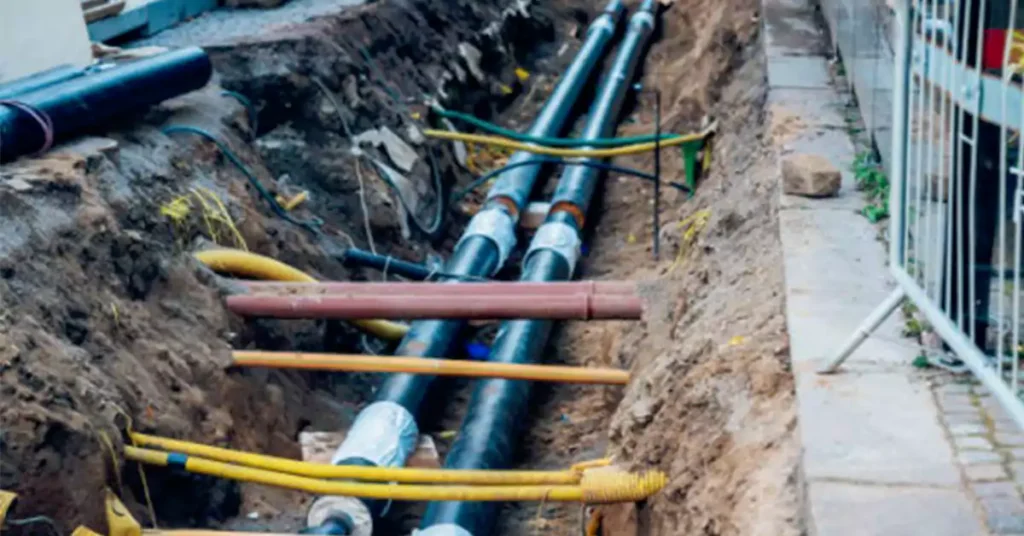
– Mantener registros precisos y mapas del diseño del sistema de conductos, incluidos puntos de acceso, uniones y conexiones de servicios públicos.
– Utilice equipos especializados, como localizadores de cables o radares de penetración terrestre, para localizar y rastrear el conducto subterráneo.
– Establecer puntos de acceso, como pozos de mano o cajas de acceso, en ubicaciones estratégicas para facilitar el mantenimiento y la resolución de problemas.
- Capacidad insuficiente: Si el sistema de conductos se sobrecarga o no tiene capacidad para cables adicionales, consulte a un electricista para evaluar la situación y considerar aumentar el tamaño del conducto o instalar conductos adicionales.
- Infiltración de agua: Si se infiltra agua en el sistema de conductos, inspeccione y repare los sellos y la impermeabilización en las juntas de los conductos. Considere aplicar más sellador o compuestos impermeabilizantes.
- Problemas con el tendido de cables: Si los cables encuentran resistencia o se atascan durante la instalación o el mantenimiento, utilice lubricantes, agarraderas para tirar de cables o cinta pescadora para facilitar el movimiento suave del cable.
- Problemas de conexión a tierra y unión: Verifique las conexiones a tierra y las técnicas de conexión para garantizar la continuidad eléctrica adecuada. Repare o refuerce las conexiones según sea necesario.
- Inspeccione periódicamente los cables para detectar signos de desgaste, daños o degradación, como grietas, deshilachados o deterioro del aislamiento.
- Reemplace los cables dañados utilizando métodos de terminación o empalme de cables adecuados.
- Considere implementar técnicas de gestión de cables, como bandejas o soportes para cables, para evitar tensiones o daños en los cables dentro del conducto.
Recuerde seguir los códigos y regulaciones eléctricas locales y consultar a profesionales al realizar tareas de mantenimiento o solución de problemas para garantizar la seguridad y el cumplimiento.
Seleccionar el conducto adecuado para su aplicación específica es crucial para garantizar un rendimiento óptimo, protección y cumplimiento de las regulaciones eléctricas.
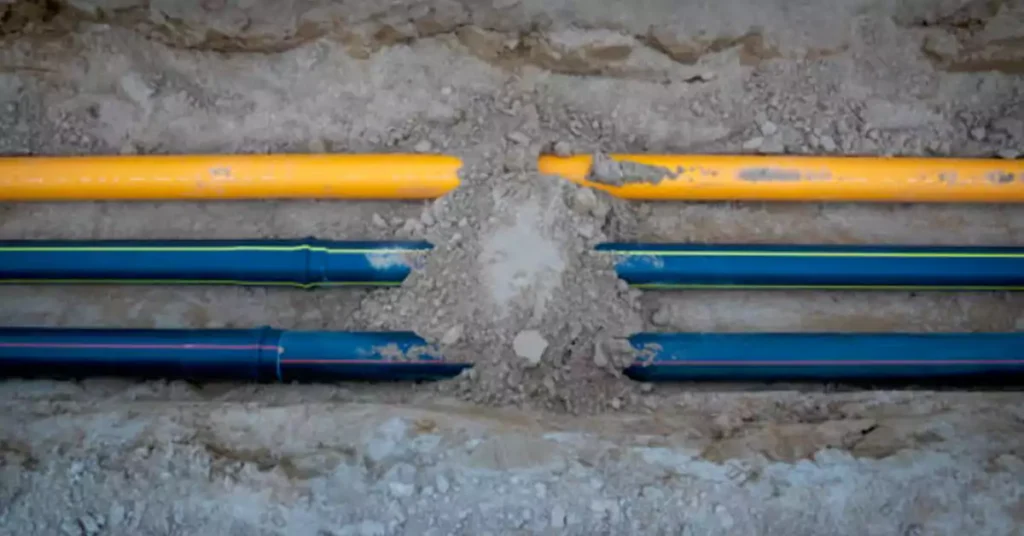
Condiciones ambientales: Evalúe los factores ambientales a los que estará expuesto el conducto, como humedad, productos químicos, variaciones de temperatura, exposición a rayos UV o sustancias corrosivas. Elija un material para conductos que ofrezca la resistencia y durabilidad adecuadas para el entorno específico.
Tipos de cables: Tenga en cuenta el tipo de cables que se instalarán dentro del conducto. Los distintos tipos de cables, como cables de alimentación, cables de datos o fibra óptica, pueden tener requisitos específicos en cuanto a radio de curvatura, compatibilidad de aislamiento o protección electromagnética. Asegúrese de que el conducto seleccionado pueda adaptarse a los tipos de cables de manera eficaz.
Clasificaciones de voltaje: Evalúe los valores nominales de voltaje del sistema eléctrico para determinar el material y el tamaño adecuados del conducto. Los sistemas de mayor voltaje pueden requerir conductos con propiedades de aislamiento mejoradas y mayor resistencia mecánica.
Tipo de conducto | Material | Ventajas | Contras | Costo |
Conducto de metal rígido (RMC) |
Acero | Excelente protección mecánica; Alta resistencia y durabilidad; Buena capacidad de puesta a tierra |
Peso pesado; Instalación compleja |
Alto |
Tubería Metálica Eléctrica (EMT) |
Acero Aluminio |
Ligero y fácil de instalar; | Protección física limitada; No apto para condiciones extremas; Menor durabilidad en comparación con RMC |
Moderado |
Conducto de fibra de vidrio |
Fibra de vidrio | Resistente a la corrosión; Ligero; Excelente aislamiento eléctrico; Fácil de instalar | Disponibilidad limitada y mayor costo; más frágil en comparación con los conductos metálicos |
Alto |
Conducto de PVC |
CLORURO DE POLIVINILO |
Ligero y fácil de instalar; resistente a la corrosión y a los productos químicos. | Menor resistencia al impacto en comparación con los conductos metálicos; rango de temperatura limitado |
Bajo |
Conducto de HDPE |
HDPE |
Fácil de instalar; Resistente a la corrosión y a los productos químicos; Buena resistencia al impacto | Menor resistencia mecánica en comparación con los conductos metálicos; Requiere herramientas especializadas para su instalación |
Moderado |
Busque siempre el asesoramiento de profesionales o consultores eléctricos que tengan experiencia en sistemas de conductos. Pueden ofrecerle información valiosa y recomendarle los mejores tipos de conductos en función de sus requisitos específicos y las normativas locales.
Recuerde priorizar la seguridad, el cumplimiento de los códigos y regulaciones locales, y tener en cuenta la durabilidad a largo plazo y el mantenimiento al momento de seleccionar su conducto.
Si desea comparar conductos de PVC de entierro directo, consulte nuestra Tutorial de conducto de PVC de entierro directo.
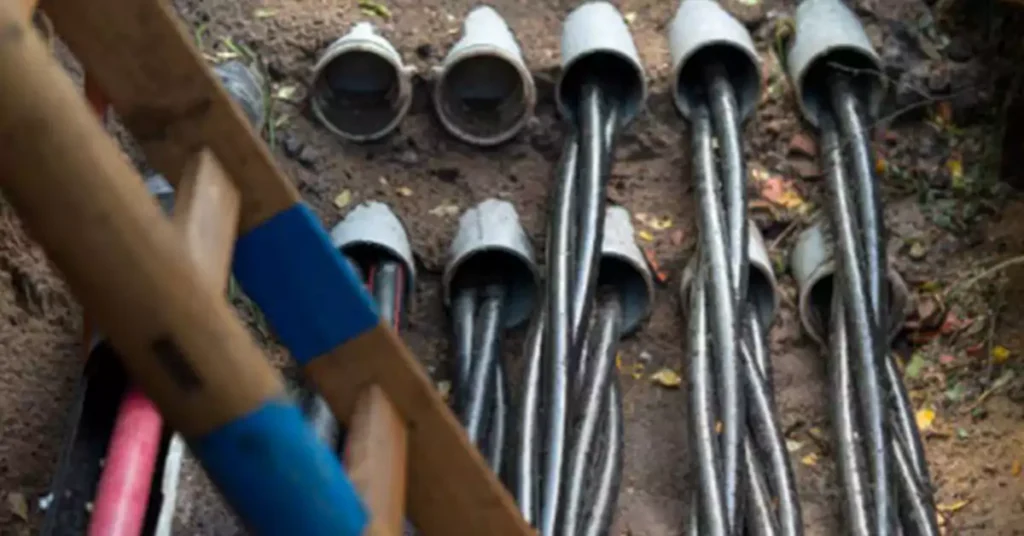
¿Se pueden utilizar tubos eléctricos no metálicos bajo tierra?
Los tubos eléctricos no metálicos (ENT) no se recomiendan para enterramiento directo o aplicaciones subterráneas.
El ENT está hecho de plástico, generalmente PVC, y se utiliza principalmente para proteger cables y alambres eléctricos en edificios residenciales y comerciales. Es liviano, flexible y fácil de usar, lo que lo hace adecuado para instalaciones de montaje superficial u ocultas dentro de paredes, techos o pisos.
El uso de conductos de ENT bajo tierra podría exponerlo a daños causados por rocas, presión del suelo, humedad y otros elementos, lo que podría comprometer la integridad del sistema eléctrico. Por lo tanto, es importante consultar los códigos y reglamentos eléctricos locales, así como el asesoramiento de un profesional, para asegurarse de elegir el conducto adecuado para aplicaciones subterráneas a fin de cumplir con los requisitos de seguridad y cumplimiento.
¿Son estancos los conductos eléctricos subterráneos?
Los conductos eléctricos subterráneos no son inherentemente impermeables. Si bien se podría suponer que el interior de los conductos subterráneos permanecería seco, es importante reconocer que se consideran lugares húmedos. Por lo tanto, los cables instalados en conductos subterráneos deben estar aprobados para tales condiciones.
Cuando un conducto pasa de una temperatura a otra, como por ejemplo del exterior al interior de un edificio, es necesario sellar los extremos del conducto. Este sellado evita el flujo sin restricciones de aire húmedo y la acumulación de condensación en el interior del conducto.
Es fundamental priorizar el sellado de los conductos subterráneos para evitar la entrada de agua y proteger la integridad del sistema eléctrico. Si se siguen estas pautas y se utilizan métodos de sellado adecuados, se puede minimizar el riesgo de problemas relacionados con la humedad.
En resumen, los conductos eléctricos subterráneos desempeñan un papel fundamental en las instalaciones eléctricas, ya que proporcionan protección, organización y enrutamiento adecuado de los cables. Garantizan la seguridad, la confiabilidad y la eficiencia de los sistemas eléctricos, al tiempo que minimizan el riesgo de daños o accidentes. El uso de conductos ofrece beneficios como una mejor gestión de los cables, un mantenimiento más sencillo y una reducción del tiempo de inactividad durante las reparaciones o actualizaciones.
Es fundamental cumplir con los códigos, las normas y los requisitos de seguridad locales al instalar conductos eléctricos subterráneos. El cumplimiento de estas normas garantiza la protección del personal, la propiedad y el medio ambiente. Si sigue las pautas prescritas, podrá mitigar los posibles peligros, prevenir fallas eléctricas y mantener un entorno de trabajo seguro.
Si comprende la importancia de los conductos, sigue los códigos de seguridad, realiza una instalación adecuada y selecciona el tipo de conducto adecuado, podrá establecer un sistema eléctrico subterráneo confiable y eficiente. Priorizar estos factores garantiza la seguridad, el cumplimiento y el rendimiento óptimo de sus instalaciones eléctricas.
Cualquier pregunta y requerimiento de conductos eléctricos, Contáctanos en cualquier momento.



